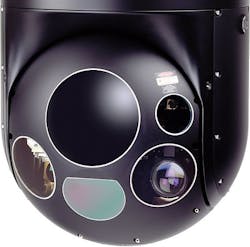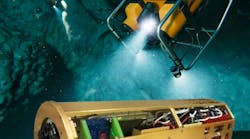Officials of the Army Contracting Command at Fort Belvoir, Va., released a sources-sought notice on Friday (W909MY15QSTAB) for a stabilized platform initiative to locate companies interested in assisting with multi-faceted sensor research and development.
The Army contracting command is conducting this market research on behalf of the Army Communications-Electronics, Research, Development and Engineering Center (CERDEC), Night Vision and Electronic Sensors Directorate (NVESD) at Fort Belvoir.
The stabilized platform, which should cost no more than $75,000, should be able to host at least three cameras: a long-wave infrared (LWIR) camera, a mid-wave infrared (MWIR) camera, and a high-definition color camera. The platform also may host GPS and inertial navigation subsystems for positioning.
Army researchers are interested in a stabilized platform that enables personnel to remove any of the required cameras and positing systems in plug-and-play fashion as far as size, weight, power consumption, and size (SWaP-C) may allow.
The platform should be able to support at least 35 pounds, operate with an operating voltage between 12 and 28 volts DC, and have the ability to plan 120 degrees to either side, as well as tilt up and down 50 degrees in each direction.
Control should come with a joystick and third-party software, and the platform should provide at the minimum platform azimuth and elevation information at 100 Hz. The platform also should be able to respond to azimuth and elevation commands at a rate of at least 30 Hz.
Army researchers want the platform to host two standard Gigabit Ethernet and one CameraLink protocols for video, serial, and Ethernet communications for command and control.
The platform should be able to mount on standard military vehicles operated at speeds as fast as 10 miles per hour on unimproved roads, minimize blurred imagery from vehicle motion and bumps, and maintain pointing without jitter and motion blur while the cameras are streaming at 30-Hz frame rates. The Army also wants embedded and free-standing software.
Related: Electro-optical sensor gimbal for airborne tactical surveillance introduced by IJK
Providers should be able to provide testing and support, technical specifications, and manage procurement. This procurement, if pursued, may be set aside for small businesses.
Optionally, Army researchers want the platform also to host a laser range finder with multiple point of return, the ability to pan 360 degrees continuously, and provide stabilization for roll.
Companies interested should respond with descriptions of capabilities and relevant company experience, and whether or not the company is a small business.
Email responses no later than 23 June 2015 to the Army's Michelle Hodges at [email protected]. Phone Hodges for questions or concerns at 703-704-0846.
More information is online at https://www.fbo.gov/notices/672822f66271be0d983915b493ac3985.



